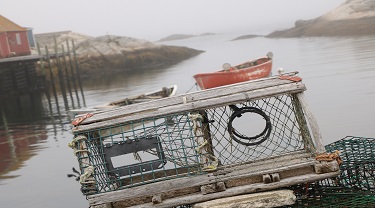Gidney Fisheries may well be one of Canada’s oldest exporters. Records showing weekly exports of our lobster via steamship to Boston, Mass, date back to 1892.
In fact, four generations of Gidneys sold Canadian lobster from Nova Scotia’s Digby Neck and had a swift business selling across North America for years, but in 2010, current owner Barry Gidney had a new idea: He wanted to sell what he knew was a world-class product around the world.
Growing the Gidney Fisheries brand globally
Gidney lives in Toronto, but wants to reinvest in the community in which he grew up and to see his family business thrive. To that end, he hired me as president and general manager in 2010 and gave me the mission of growing the business globally.
Since then, we’ve added two new buildings to our original headquarters. The first accommodates our relatively new frozen-lobster business and the second is a warehouse that expands our holding capacity.
Today, live and frozen lobster are our bread and butter and we employ between 95 and 100 people. When I arrived in 2010, we had just 15 employees. Right now, we’re only running a day shift in our lobster-processing plant, where were humanly kill the lobster, shuck the uncooked meat and process it into a sashimi-grade frozen product. The long-term goal is to run four shifts 24 hours a day, seven days a week.
Our first sale outside of North America came in August 2010 and it was to the Netherlands. I had participated in trade missions to Europe earlier that summer and the sale resulted from them.
Face-to-face is best when doing business internationally
In fact, all of our business internationally has come from meeting customers face-to-face. We’re in Asia and Europe two to three times a year — either for trade shows or on trade missions. I’ve accumulated a lot of frequent-flyer points in eight years.
We’ve had great success in selling overseas because there’s high demand for our premium, world-class product. In the beginning, about half of our non-North American sales were to Europe and the Middle East with the other half going to Asia, but in the past 18 months, Asia has expanded and now accounts for about 70 per cent of our off-continent sales.
3 tips for international selling from the exporting trenches
Deeply understand new markets
Really knowing marketplace is essential and changes from country to country — even in Europe. For example, Switzerland just stopped allowing citizens to boil lobster live. Soon after that law was passed, a Swiss customer ordered 1,000 pounds of our HPP lobster. (For HPP lobster, the creature goes a water chamber and the pressure is slowly increased to the point where they’re killed humanly. The pressure shrinks the meat and breaks connective tissue so we can pull a tail and other meat out raw. We then flash freeze it at -70C, package and ship it.)
Get on a plane and get into market
Theoretically, you can do all your business — even studying the ins and outs of a new market — from a laptop, but that’s not what you want to do. There’s no substitute for travelling to your market and talking to people. I’ve been in the seafood business for more than 25 years and what I know today in the live and frozen lobster business compared to what I knew eight years ago is night and day, and it’s all from getting out there, in front of customers. That knowledge comes from studiously researching potential markets and then getting on a plane and meeting prospective customers in those markets. Going in blind to a market is a challenge. You’ll still export, but you won’t prosper in the same way. People will take advantage of you.
Watch your accounts receivables
We’ve had a few challenges with risky receivables. We use Export Development Canada’s Portfolio Credit Insurance. But we also research our clients and take extra steps to validate them. We’ll leverage whatever we can get in terms of accounts receivable reports and financial reporting. In certain countries, I won’t stop there. I’ll contact other local customers in those areas to find out about companies. I’ve used the Trade Commissioner Service to talk to prospective clients. When in doubt about a new customer, have them prepay and make sure the funds arrive in your account.





